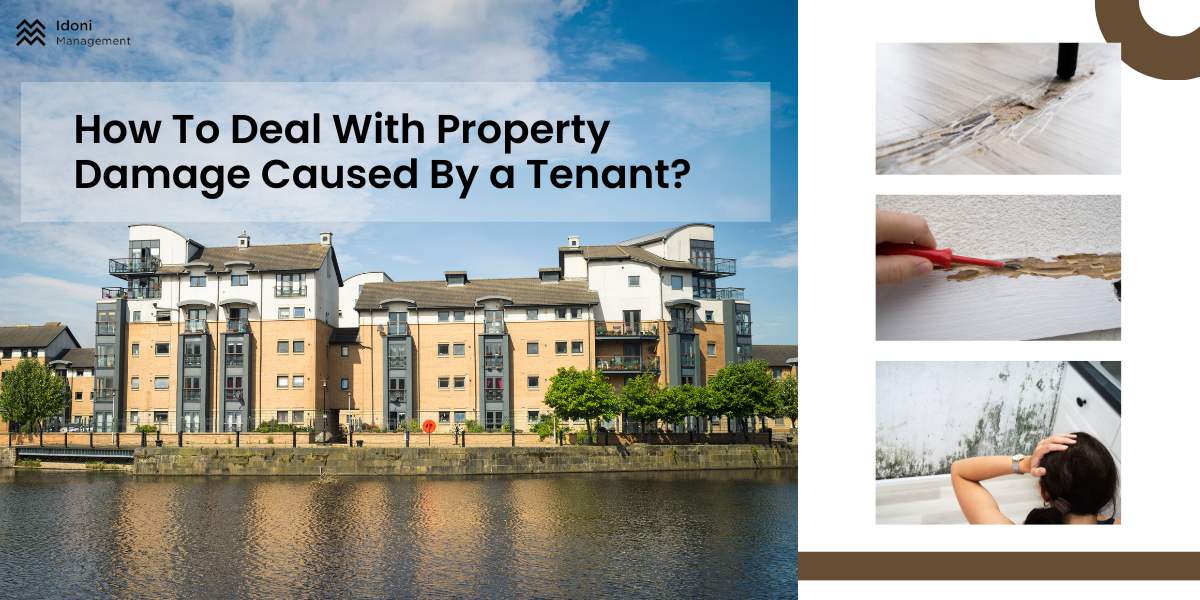Damage is the one word you do not want to hear at the same time as renting out your own home.
Property damage is understandably one of the top concerns for 28% of the property owners we questioned when it comes to leasing their property.
However, rental properties do not remain in the same condition indefinitely, and damage can occur even with the best of renters. However, there is a delicate line between normal wear and tear and renter damage to property.
If there is damage to your rental property, such as holes in the walls, torn carpets, or developing mildew, it can be difficult to ascertain who is responsible for repairs and charges without becoming a game of who says what.
To help you understand this, you should ensure the tenant screening process with specific questions to ask tenants. Things like “How much money do you make each month?” and “When do you plan to move in?” can help you make a better decision. We created an informative article that outlines your responsibilities as well as those of your tenants if damage to a rental property is caused by them. If an issue arises, you’ll know exactly how to handle it, determine who is to blame, and protect your property from further damage.
Has a Bad Tenant Caused Damage to Your Property?
In most instances, the costs for repairing unintentional harm may be deducted from a tenant’s protection deposit.
However, you should decide which forms of harm are resulting from the tenants and which might be a result of everyday wear and tear or an getting old house. If you have tenancy problems and the renter refuses to pay for maintenance, you can want to rent a mediator or flow to small claims court.
You must follow a few easy principles to assess whether or not the tenant has damaged your property. One of the landlord and tenant’s rules is that on the day the renter moved in, they both had to check the apartment. You’ll want the renter to recognize the flat or house’s condition in writing.
Once your tenant has chosen a move-out date, you can compare any damages. Furthermore, while charging tenants for any damage to your rental property, you must consider the following factors:
-
- The broken item’s age
-
- The initial expense of repairing or replacing damaged items or property
-
- How much does it cost to replace an appliance or item altogether?
-
- How long will it take to fix a section of the house?
What Should You Do If a Tenant Damages Your Property?
If a tenant damages the rental unit, the property owner should research the state’s security deposit laws. Landlord-tenant rules differ from state to state, especially those concerning security deposits. Furthermore, Landlords in Connecticut are allowed to charge a $50 non-refundable rental application fee.
For example, Connecticut law requires landlords to give tenants 30 days’ notice and specifies what landlords may deduct from security deposits. Check your state’s laws to learn what you can charge tenants for property damage.
Landlords cannot generally charge their renters for regular wear and tear on the property. Only if a specific item or area of the residence was abused or neglected may the landlord demand a renter to bear repair costs. Otherwise, normal property use should not cause considerable damage.
For example, if doorknobs go loose or the shower needs re-caulking, this is considered normal wear and tear. Landlords, on the other hand, can charge tenants for carpet stains and broken tiles.
Furthermore, landlords can examine their property insurance coverage to see if certain types of repairs are covered by the insurer.
Estimating Repair Costs :

Do the maintenance for your rental apartment require the services of a contractor? If this is the case, you need to get two or three estimates from experts for those repairs. Then, you can use these estimations to justify the rent you charge tenants. You can provide the estimates to the tenants as well as the court or mediator if necessary.
After estimating repair costs, you must offer the tenant an itemized stock of the damages as well as the cost of each repair. Provide all repair estimates or receipts to the tenant. After that, you may take the expenses out of the tenant’s security deposit.
However, if you notice any damage during the tenancy time before the renter moves out, you can give them a notice for the issues along with an invoice stating what they must pay. You might want to think about selling a home with tenants after an eviction if the tenants are not paying their rent on time and you are experiencing serious issues with them.
Wrapping Up,
After absorbing the insights provided in this article, you should feel prepared to navigate instances where a bad tenant inflicts damage on your property. In situations where tenants become uncooperative, whether it involves reluctance to cover repair costs or failure to meet monthly rent obligations, legal recourse might be necessary.
If you find yourself in need of professional assistance in managing such situations, consider reaching out to reputable property management in Bridgeport CT. One such notable entity is Idoni Management, known for its expertise in addressing property-related challenges and facilitating effective solutions.
Performing Repairs :
A landlord has to make sure repairs are as soon as viable after harm occurs. Landlord-tenant rules require homeowners to make certain their home is livable. The following are the immediate fixes that landlords will need to make:
-
- Repairing walls, ceilings, and other structural problems
-
- Repairing electrical problems
-
- Repairing plumbing issues or leaking pipes
-
- Hiring exterminators to deal with infestations
-
- Getting rid of any apparent mold
-
- Repairing damaged locks and doors
If trouble with the home impairs the habitability of renters, the landlord must proceed with repairs within 24 hours of receiving a request to rectify the state of affairs. The majority of states’ tenant-landlord rules require that considerable troubles be constant within 24 hours.
Still, even in cases of less serious issues, you should aim for a 48-hour response to maintain excellent relations with your tenants. The following are examples of concerns that landlords will need to rectify and tenants will lose portions of their security deposit for:
-
- Large holes in the walls
-
- Tiles and fixtures that have broken
-
- Carpets that are torn or dirty
-
- Drains clogged due to incorrect use
-
- Shattered windows and screens
-
- Window blinds that have been damaged
-
- Extermination of pests such as mice
-
- Serious appliance damage
Making the Tenant Pay for Repairs :
Tenants have unique responsibilities when they move into a landlord’s home. Renters, for example, must be responsible with their waste, use energy and gas wisely, and keep their plumbing systems clean.
Any damage to your property that goes past normal wear and tear is the tenant’s monetary responsibility to repair. If your tenant damages your property, you have got 5 options for getting the tenant to pay for maintenance.
-
- You must identify the problem and the damage to ensure that it is the tenant’s fault.
-
- Now, the next thing to do is to check and take pictures or videos of all the damage. Make sure to write down and take photos of how things looked when the tenant first came in. Later, you can compare these pictures from before and after the damage happened. This way, you have a clear record of what changed.
-
- To obtain costs from sellers, handymen, and contractors. Make sure you obtain numerous repair estimates. Furthermore, have a conversation with the tenant and give them all estimates and invoices. And, if the tenants refuse to pay the charges, you may have to take them to court.
-
- Before you begin any legal processes, you should determine if the security deposit check will cover the cost of repairs. If it’s not then the penalty can range from $250 to a maximum of $2,000.
Legal Action May Be Taken If the Tenant Refuses to Pay for Repairs :

Have you discovered that the costs of repairs will exceed the amount of the security deposit? If this is the case, you may need to serve the tenant with a ct notice to quit example and take legal action if they refuse to pay for the remaining repair costs.
Furthermore, if you ever find yourself in a state of affairs in which the renter becomes aggressive or violent, you must in all likelihood document a police file. If the tenant poses a danger to your home or your friends, you can serve them with a 3-day eviction notice.
Wrapping Up,
After absorbing the insights provided in this article, you should feel prepared to navigate instances where a bad tenant inflicts damage on your property. In situations where tenants become uncooperative, whether it involves reluctance to cover repair costs or failure to meet monthly rent obligations, legal recourse might be necessary.
If you find yourself in need of professional assistance in managing such situations, consider reaching out to reputable property management in Bridgeport CT. One such notable entity is Idoni Management, known for its expertise in addressing property-related challenges and facilitating effective solutions.





